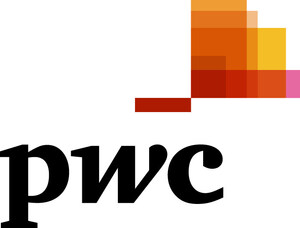NEW YORK, Nov. 27, 2012 /PRNewswire/ -- The life and pensions sector is facing a rapidly-evolving and competitive environment. According to PwC US's "Life Insurance 2020: Competing for a Future" report, companies operating in this sector will need to cope with major social, technological, environmental, economic and political factors and take advantage of emerging opportunities to survive over the next 10 years.
(Logo: http://photos.prnewswire.com/prnh/20100917/NY66894LOGO )
These factors powering change in the sector have the potential to drastically impact the role of life and pension insurers. Some of these market trends include: an aging population increasing demand for retirement income and pension solutions; advances in "big data" and analytics allowing insurers to design products that minimize complexity and meet consumers' need at different life stages; continued risk of government welfare cutbacks, which could shift retirement and benefit decisions back on consumers; shifting economies across the globe in developed and emerging countries; and increasing medical advances (e.g., wearable health monitoring devices, personal genomics) coupled with rising medical costs are increasing risks for consumers and highlighting the need for "well-being" and other pro-active health management programs.
"To survive in the long term, life and pensions companies will need to actively identify and handle threats as they emerge, rather than passively responding to market changes," said Jamie Yoder, PwC's US insurance advisory practice co-leader. "Insurers will need to focus on simplifying the presentation of products and features to customers and advisors, while overcoming a complex set of processes at the back end".
The "Life Insurance 2020: Competing for a Future" report identifies four key themes and related risks that insurers need to address in order to grow. They are:
Two-speed global growth: The overall market for life insurance is increasing in emerging markets and decreasing in the developed world, particularly in the U.S. and Europe. In the U.S., life insurance assets as a percentage of overall household financial assets have been steadily decreasing over the past two decades. Leading up to the 2008 financial crisis, life insurance was viewed more as an investment, as opposed to a protection product, though guarantees and protection have been viewed more favourably since that time. In addition, the demographic changes occurring in the U.S., such as aging Baby Boomers, are creating a growing market for retirement planning and retirement income.
"Growth for insurers in the life and retirement market will come from expanding into new customer segments, such as middle markets, and alternative distribution channels, such as worksite and direct, by offering more comprehensive advice and developing innovative solutions. However, insurers have to compete with other financial service providers to capture this market and therefore must create capabilities to reach a broader part of the market," added Yoder. "With these new markets, insurers will need to spend more time educating consumers on the value of life insurance and pensions.
Distribution disruption and the customer revolution: Responsibility for retirement planning and ancillary benefits has the risk of being pushed from governments and employers to individual consumers. Since customers have become accustomed to the convenience of digital education, research and transactions when they want, where they want and through any channel they want, distribution of products is changing rapidly.
"The role of advisers is evolving because their advice is only one source that customers use for planning," said Yoder. "Since customers now have control, they demand more information and convenience from many channels when choosing life and pension products. In addition, customers are demanding advice about a range of financial products, as opposed to a narrow set of insurance products."
With the uncertainty surrounding the economy, customers expect honest advice for their life insurance planning. Today, consumers aren't sure if they need life insurance anymore, and since the product is complex, they need dedicated advisors who can tell them exactly how to spend their money at every stage of their lives.
Information advantage through "big data": Leading insurers are turning to advanced analytics and external sources of data from purchases, social media and other digital means to understand customers better. The challenge for insurers is using that data when developing new ways for tailoring products for customers.
"We will see financial service providers use 'big data' analytics to design products that adapt to the changing needs of the household as they move through different life stages" said Dr. Anand Rao, principal overseeing innovation in analytics within PwC's US insurance advisory practice. "Advice will be tailored based on age, making it simpler for consumers and advisors, while automation and analytics hide the complexity of insurance products."
Big and fast—evolving business models: Advancements in technology are allowing new players to enter the market with new business models that have a lower cost structure.
"To compete against these companies, traditional insurers need to reinvent their operating models to reduce cost structure, simplify their offerings and organize around customer interactions," said Yoder. "Companies will also need to streamline their procedures and reorganize their talent to focus on high-growth markets and customized solutions."
About the PwC Network
PwC firms help organizations and individuals create the value they're looking for. We're a network of firms in 158 countries with more than 180,000 people who are committed to delivering quality in assurance, tax and advisory services. Tell us what matters to you and find out more by visiting us at www.pwc.com.
Learn more about PwC by following us online: @PwC_LLP, YouTube, LinkedIn, Facebook and Google +.
© 2012 PricewaterhouseCoopers LLP, a Delaware limited liability partnership. All rights reserved. PwC refers to the US member firm, and may sometimes refer to the PwC network. Each member firm is a separate legal entity. Please see www.pwc.com/structure for further details.
This content is for general information purposes only, and should not be used as a substitute for consultation with professional advisors.
SOURCE PwC
WANT YOUR COMPANY'S NEWS FEATURED ON PRNEWSWIRE.COM?
Newsrooms &
Influencers
Digital Media
Outlets
Journalists
Opted In




Share this article